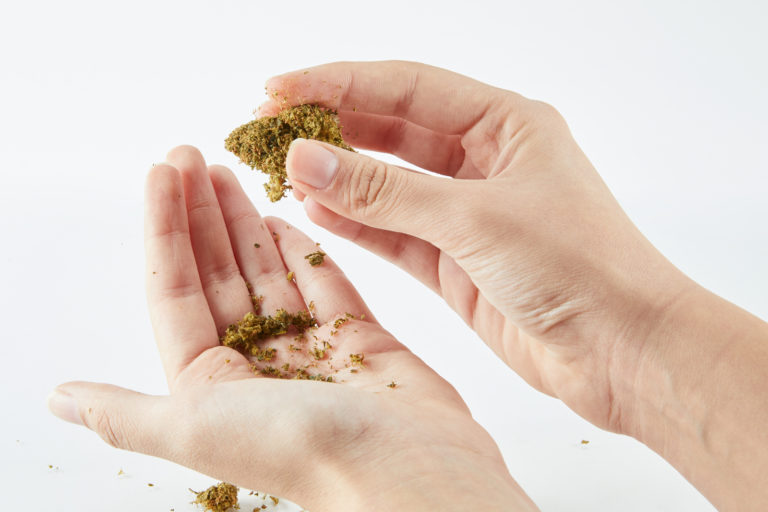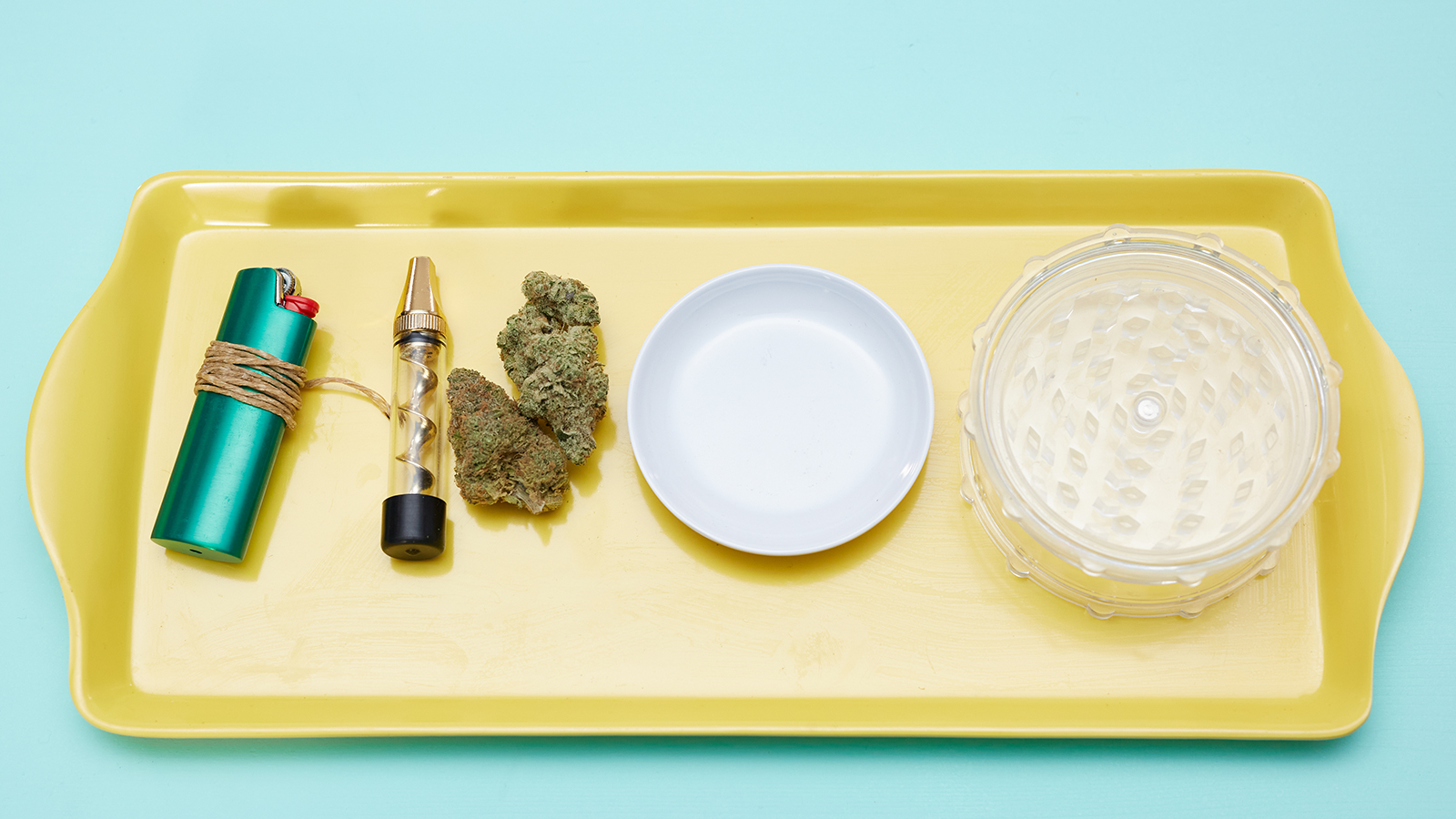Cannabis shake refers to the loose scraps of plant matter often found at the bottom of a bag of cannabis. Understandably, beautiful buds don't remain perfect forever, and inevitably, pieces fall off and collect at the bottom of the container—but don't throw it out, there are many uses to shake that can stretch your cannabis further.
Why is it called shake?
The origins of the word shake are relatively unknown, but it stands to reason that the term originated to describe the tiny pieces of plant matter that "shake" off the whole buds during handling.
 Photo by: Gina Coleman/Weedmaps
Photo by: Gina Coleman/WeedmapsImage lightbox

Shake is often considered to be a lower-quality weed, and understandably so when compared to the frosty nugs from which they separate. These leftover pieces of bud and kief aren't much to look at but can be a highly potent and useful addition to your cannabis cabinet.
How much does shake cost?
You won't often find shake on dispensary shelves, but most cannabis shops hold on to the unseemly trimmings to maximize their profits. Depending on the laws in their state, some dispensaries will throw all of their shake into a large, grab-bag container and use it to roll their in-house joints. These can be a fun, surprise smoking experience, but tread with caution — you never quite know what strain you're puffing with a shake-filled joint. When in doubt, ask your budtender for more details.
Dispensaries will sometimes sell different amounts of shake for a far cheaper price than flower. You will see some shops selling an ounce of shake for as little as $40. In a pinch, shake is cheaper, looks exactly like pre-ground bud, and it's just as smokeable.
What is weed shake used for?
Once you move past the lack of glamour, shake can be an excellent substitute for full buds.

Image lightbox

Since it's essentially pre-ground flower, shake is ready from the get-go and has many uses:
- Pack it: Load up a bowl with shake or use it to fill out the empty space in a large joint or blunt.
- Make edibles: Stretch the potency of your cannabutter by mixing it in with your regular bud before decarboxylation.
- Create a tincture: As long as you have enough shake by weight for your recipe, the alcohol will properly strip all the THC goodness out of it.
From the cannabis market, cannabis extractors will occasionally use shake to make concentrates, though many in the industry prefer to use flower to ensure a higher quality end product.
Is weed shake bad?
Whether shake is bad or not really depends on individual preference, though there are some pros and cons. Shake can sometimes be rife with unsmokable cannabis trimmings, such as stems and seeds, which can be a pain to remove. Dispensary-bought shake can also defy identification, as most bags are a mix of cannabis genetics and won't provide a reliable psychoactive experience every time. Shake also dries out quickly, so you'll want to smoke it fast before its condition worsens.
However, for some, the pros of inexpensive and usable shake outweigh the cons. It's ultimately up to personal preference, budget, and the intended use for the shake.
Written by Lesley Nickus | Featured image by Gina Coleman/Weedmaps




